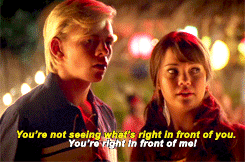I recently finished my
manuscript for my third novel, Shattered Angel, and I’m in edit mode. I think
this part of the process stresses me out more than actually writing the novel
because there is no definitive end. I could edit and edit and edit... and still
my perfectionist brain would want to edit more (and more and more and more...)
Enter the Law of Diminishing
Returns.
This law is not just for business
processes. If you are not familiar with this law, here’s the definition from
Wikipedia.org:
In economics, diminishing returns (also called law of diminishing returns, law of variable proportions, principle of diminishing marginal productivity, or diminishing marginal returns) is the decrease in the marginal (incremental) output of a production process as the amount of a single factor of production is incrementally increased, while the amounts of all other factors of production stay constant.
The law of diminishing returns states that in all productive processes, adding more of one factor of production, while holding all others constant ("ceteris paribus"), will at some point yield lower incremental per-unit returns. The law of diminishing returns does not imply that adding more of a factor will decrease the total production, a condition known as negative returns, though in fact this is common.
Having now self-published two books, I believe this law is one of the most important concepts to implement during the editing process—I'm talking about all the edits that take place from the moment I type the final word in my first draft to the moment when I send my manuscript to my proof-reader. Using the definition above for the Law of Diminishing Returns, the two variables in my process are:
Output
(return): reader
enjoyment
Factor
of Production: edits
I know that I could read
and revise my manuscript forever. Literally—forever. This is because nothing in
life is perfect, and there would be no end to revisions if I didn’t put some sort
of arbitrary end date out there. To help keep myself out of the endless abyss
of editing, I’ve grouped my editing process into three separate phases:
Phase
1: Quick review
I do this right after I
finish the book. I look for obvious errors, inconsistencies, and wording
changes. The return in this phase is still relatively high due to the
importance. It’s hard for someone to enjoy a book that’s filled with typos and
silly mistakes. For example, in my second novel I had realized that the name of
one of my secondary characters changed half way through the book. Oops. This is
something that’s insignificant in the grand scheme of the entire novel, but it
can turn a reader off quickly. The feeling is that if I don’t care about my
characters enough to get their names right, why should the reader care about
them either?
Phase
2: Beta reader edits
As a self-published
author, I can define my own process. Instead of paying for one person to edit
my book and receive only one perspective, I like to have several volunteer beta
readers. I’m talking in the range of 10-15 people from my target reading
audience. If there is a specific topic that requires an expert for validation,
I include them in the beta read. I’m also a part of my beta read—this is where
I read it on my Kindle and try to become the ‘reader’.
My beta readers tell me
exactly what they think—words that annoy them, little things they love, errors,
plot inconsistencies, characters they hate/love, how they felt when reading
certain parts, etc. I also follow up with some very specific questions on areas
that I’m debating on changing. The reason I have so many beta readers is
because they all read with a different perspective. One person my love my main
character while another may hate him. Seeing the story from so many different
angles helps me to determine if there are any perceptions I wish to eliminate,
or at least lessen. For example, if someone hates my main character and my goal
is for the reader to love him, then I might want to make some tweaks based on
that reader’s feedback. The many different perceptions also help me establish
patterns—if a vast majority of the beta readers are confused by a certain part
then I know I need to change something.
With my second book I
started using a tiered process that I think works great. I designate a certain
time period for my beta reads—for example the month of December. I then ask my
beta readers to sign up for a week with the requirement that they read and send
me comments by the end of that week. I give myself some time between the weeks to
make any changes/corrections. I started doing this because I found that during
the edits on my first book, I’d make changes based on feedback but then didn’t
have anyone who could read the updated version. I had to resend certain parts
to see what the beta readers thought. With my new process, there is always
someone to read the new content. I also let the prior beta readers know about significant
content changes I’ve made in case they are interested.
I don’t skimp on this
phase of the editing process because it really is where I reach the peak of my
returns. Remember, my return is ‘reader enjoyment’ so there’s no better way to
affect that then to use feedback from readers in my target group. I don’t
change things based on all the feedback, but I’m confident that I’m able to capture
the important changes that will affect the reading enjoyment for the majority
of my target group.
Really, my beta readers
are awesome.
Phase
3: Endless tweaks
This is where the return
on edits drops significantly. Without a deadline from a publisher forcing me to cut it off, this phase could go on forever. I could adjust the way a sentence is worded or
add/remove content until the day I die. However, changes in this phase won’t
significantly alter the reading experience, positively or negatively. At least
it won’t for the majority of the reading population in my target audience. Remembering the Law of Diminishing Returns helps keep me from remaining in Phase 3 too long.
So when you start to edit
your manuscript think about the Law of Diminishing Returns, and don’t get caught
in the endless abyss of Phase 3. It will save you a lot of stress, headaches,
and time.
Let us know in the
comments how you avoid the pitfall of Phase 3!
~ Carrie













